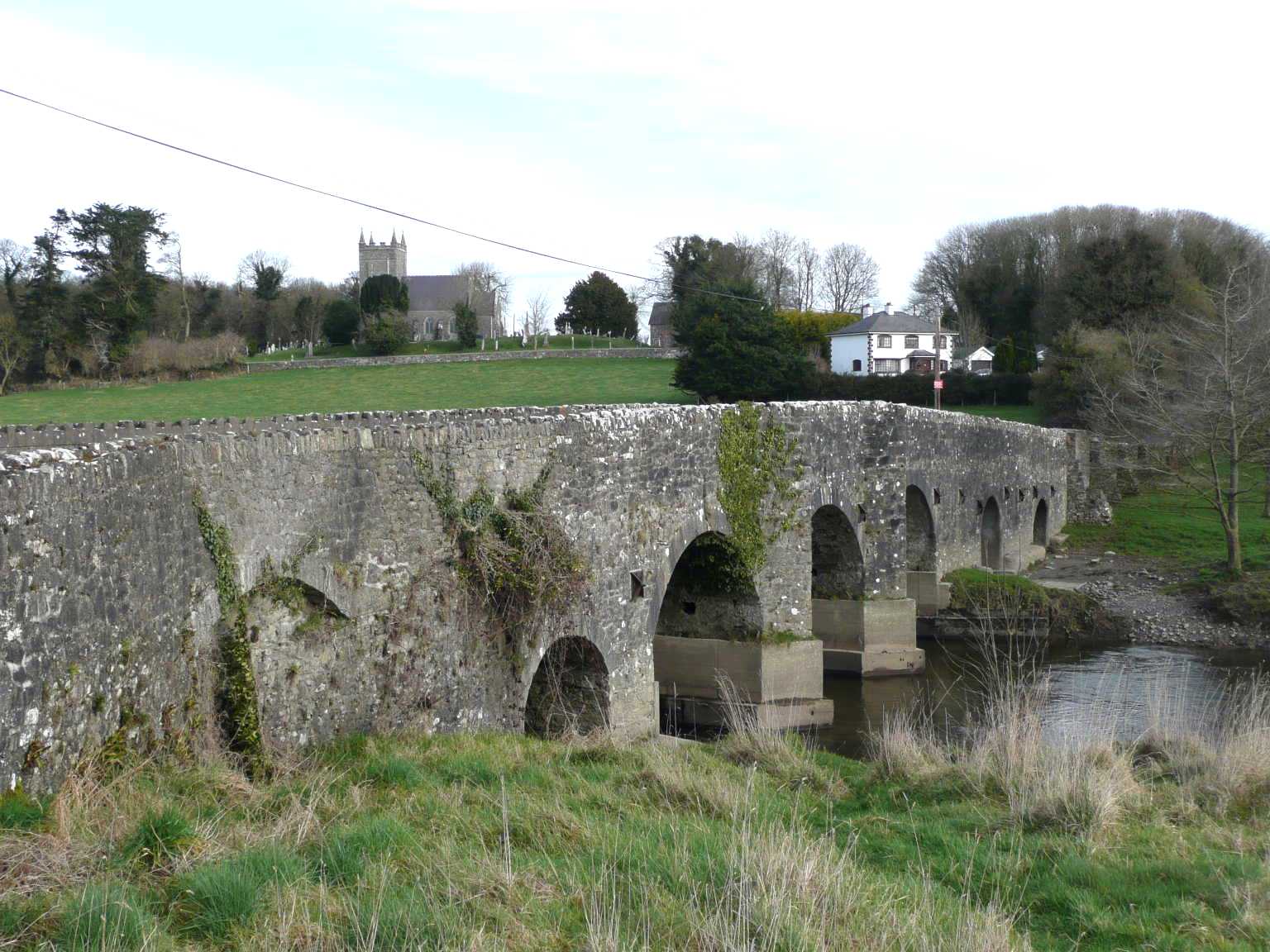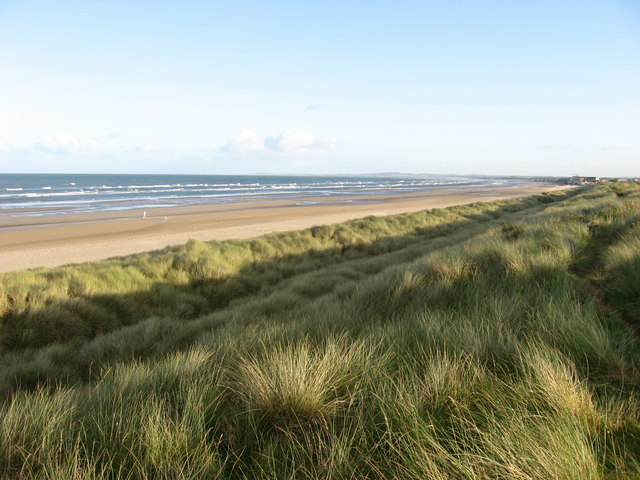|
Donaghpatrick
Donaghpatrick () is a village and townland in County Meath, Ireland. It lies approximately 5 km northwest of Navan off the R147 regional road between Navan and Kells on the northern bank of the River Blackwater. The Irish language name of the townland, ''Domhnach Phádraig'', means "the church of Patrick". The local Church of Ireland church, dedicated to Saint Patrick, was built in 1896 close to the site of a much earlier church, and incorporating parts of a medieval tower house. The Cruys family from County Dublin "Action to match our speech" , image_map = Island_of_Ireland_location_map_Dublin.svg , map_alt = map showing County Dublin as a small area of darker green on the east coast within the lighter green background of ... owned the manor in medieval times. The inquisition taken after the death of Sir John Cruys of Merrion Castle in 1407 lists Donaghpatrick as one of his estates. References Towns and villages in County M ... [...More Info...] [...Related Items...] OR: [Wikipedia] [Google] [Baidu] |
John Cruys
Sir John Cruys or Cruise (died 1407) was a prominent Irish soldier, diplomat and judge of the late fourteenth and early fifteenth centuries. He was one of the most substantial landowners in County Dublin and County Meath, and built Merrion Castle near Dublin City in the 1360s. His marriage to the heiress of the powerful Verdon family of Clonmore brought him substantial lands in County Louth.Smith, p. 65. He sat in the Irish Parliament and was a member of the King's Council.O'Kelly 1998. p. 91. He was a highly regarded public servant, but also a determined and acquisitive man of business, who fought a ten-year battle to establish his wife's right to her inheritance. Background He was the son of Simon Cruys (died after 1366) and his wife and cousin Margaret Cruys, daughter and heiress of another John Cruys of Cruisetown. The Cruys or Cruise family, of Anglo-Norman origin, who first settled in Cornwall, came to Ireland with King Henry II of England during the Norman Invasion ... [...More Info...] [...Related Items...] OR: [Wikipedia] [Google] [Baidu] |
Townland
A townland ( ga, baile fearainn; Ulster-Scots: ''toonlann'') is a small geographical division of land, historically and currently used in Ireland and in the Western Isles in Scotland, typically covering . The townland system is of Gaelic origin, pre-dating the Norman invasion, and most have names of Irish origin. However, some townland names and boundaries come from Norman manors, plantation divisions, or later creations of the Ordnance Survey.Connolly, S. J., ''The Oxford Companion to Irish History, page 577. Oxford University Press, 2002. ''Maxwell, Ian, ''How to Trace Your Irish Ancestors'', page 16. howtobooks, 2009. The total number of inhabited townlands in Ireland was 60,679 in 1911. The total number recognised by the Irish Place Names database as of 2014 was 61,098, including uninhabited townlands, mainly small islands. Background In Ireland a townland is generally the smallest administrative division of land, though a few large townlands are further divided into ... [...More Info...] [...Related Items...] OR: [Wikipedia] [Google] [Baidu] |
County Meath
County Meath (; gle, Contae na Mí or simply ) is a county in the Eastern and Midland Region of Ireland, within the province of Leinster. It is bordered by Dublin to the southeast, Louth to the northeast, Kildare to the south, Offaly to the southwest, Westmeath to the west, Cavan to the northwest, and Monaghan to the north. To the east, Meath also borders the Irish Sea along a narrow strip between the rivers Boyne and Delvin, giving it the second shortest coastline of any county. Meath County Council is the local authority for the county. Meath is the 14th-largest of Ireland's 32 traditional counties by land area, and the 8th-most populous, with a total population of 220,296 according to the 2022 census. The county town and largest settlement in Meath is Navan, located in the centre of the county along the River Boyne. Other towns in the county include Trim, Kells, Laytown, Ashbourne, Dunboyne, Slane and Bettystown. Colloquially known as "The Royal County" ... [...More Info...] [...Related Items...] OR: [Wikipedia] [Google] [Baidu] |
Republic Of Ireland
Ireland ( ga, Éire ), also known as the Republic of Ireland (), is a country in north-western Europe consisting of 26 of the 32 Counties of Ireland, counties of the island of Ireland. The capital and largest city is Dublin, on the eastern side of the island. Around 2.1 million of the country's population of 5.13 million people resides in the Greater Dublin Area. The sovereign state shares its only land border with Northern Ireland, which is Countries of the United Kingdom, part of the United Kingdom. It is otherwise surrounded by the Atlantic Ocean, with the Celtic Sea to the south, St George's Channel to the south-east, and the Irish Sea to the east. It is a Unitary state, unitary, parliamentary republic. The legislature, the , consists of a lower house, ; an upper house, ; and an elected President of Ireland, President () who serves as the largely ceremonial head of state, but with some important powers and duties. The head of government is the (Prime Minister, liter ... [...More Info...] [...Related Items...] OR: [Wikipedia] [Google] [Baidu] |
Navan
Navan ( ; , meaning "the Cave") is the county town of County Meath, Ireland. In 2016, it had a population of 30,173, making it the tenth largest settlement in Ireland. It is at the confluence of the River Boyne and Blackwater, around 50 km northwest of Dublin. History and name Navan is a Norman foundation: Hugh de Lacy, who was granted the Lordship of Meath in 1172, awarded the Barony of Navan to one of his knights, Jocelyn de Angulo, who built a fort there, from which the town developed. Inside the town walls, Navan consisted of three streets. These were Trimgate Street, Watergate St. and Ludlow St. (which was once called Dublingate St.). The orientation of the three original streets remains from the Middle Ages but the buildings date from the Victorian and Edwardian periods. The town's Post Office on Trimgate Street office was built in 1908 on the site of an earlier post office. In 1990, the post office was relocated to Kennedy Road. The building of a new shoppin ... [...More Info...] [...Related Items...] OR: [Wikipedia] [Google] [Baidu] |
R147 Road (Ireland)
The R147 is a regional road in Ireland. Its first section runs from St Peters Church in Phibsborough, Dublin to its junction with the M50. It then follows the route of a former section of the N3 between Clonee and Kells. It serves as an alternative route for non-motorway traffic and traffic wishing to avoid tolls on the M3. Route The official description of the R147 from the ''Roads Act 1993 (Classification of Regional Roads) Order 2012'' ''Irish Statute Book''. 2012-02-28. reads: :R147: Dublin — Clonee — Navan — Derver, County Meath (Part old National Route 3) :Between its junction with the [...More Info...] [...Related Items...] OR: [Wikipedia] [Google] [Baidu] |
Kells, County Meath
Kells (; ) is a town in County Meath, Ireland. The town lies off the M3 motorway, from Navan and from Dublin. Along with other towns in County Meath, it is within the " commuter belt" for Dublin, and had a population of 6,135 as of the 2016 census. It is best known as the site of Kells Abbey, from which the Book of Kells takes its name. Name The settlement was originally known by the Irish name ''Cenannus'', later ''Ceannanas'' or ''Ceannanus'', and it is suggested that the name 'Kells' developed from this.Placenames Database of Ireland (see archival records) Anngret Simms and Katharine Simms, ''Irish Historic Towns Atlas, No. 4: Kells'', p. 1. Royal Irish Academy, |
Kells Blackwater
The Kells Blackwater ( ga, An Abhainn Dubh), also called the River Blackwater or Leinster Blackwater, is a river that flows through the counties of Cavan and Meath in Ireland. It is a tributary of the River Boyne which flows into the Irish Sea at Drogheda. (This is one of two River Blackwaters which flow into the Boyne in County Meath, the other originates in County Kildare). It has its source in the south of County Cavan, near the town of Bailieborough. It flows through Lough Ramor at Virginia, County Cavan, past Kells, County Meath, before joining the River Boyne in Navan, County Meath. See also *Rivers of Ireland Shown here are all the major rivers and tributaries of Ireland with their lengths (in kilometres and miles). Starting with the Northern Ireland rivers, and going in a clockwise direction, the rivers (and tributaries) are listed in regard to their ... References External linksKells Anglers Associationincludes river's insect life {{Coord, 52, 51, N, 7, 27, ... [...More Info...] [...Related Items...] OR: [Wikipedia] [Google] [Baidu] |
Irish Language
Irish (an Caighdeán Oifigiúil, Standard Irish: ), also known as Gaelic, is a Goidelic languages, Goidelic language of the Insular Celtic branch of the Celtic language family, which is a part of the Indo-European languages, Indo-European language family. Irish is indigenous language, indigenous to the Ireland, island of Ireland and was the population's first language until the 19th century, when English (language), English gradually became Linguistic imperialism, dominant, particularly in the last decades of the century. Irish is still spoken as a first language in a small number of areas of certain counties such as County Cork, Cork, County Donegal, Donegal, County Galway, Galway, and County Kerry, Kerry, as well as smaller areas of counties County Mayo, Mayo, County Meath, Meath, and County Waterford, Waterford. It is also spoken by a larger group of habitual but non-traditional speakers, mostly in urban areas where the majority are second language, second-language speakers. ... [...More Info...] [...Related Items...] OR: [Wikipedia] [Google] [Baidu] |
Church Of Ireland
The Church of Ireland ( ga, Eaglais na hÉireann, ; sco, label=Ulster-Scots, Kirk o Airlann, ) is a Christian church in Ireland and an autonomous province of the Anglican Communion. It is organised on an all-Ireland basis and is the second largest Christian church on the island after the Roman Catholic Church. Like other Anglican churches, it has retained elements of pre-Reformation practice, notably its episcopal polity, while rejecting the primacy of the Pope. In theological and liturgical matters, it incorporates many principles of the Reformation, particularly those of the English Reformation, but self-identifies as being both Reformed and Catholic, in that it sees itself as the inheritor of a continuous tradition going back to the founding of Christianity in Ireland. As with other members of the global Anglican communion, individual parishes accommodate different approaches to the level of ritual and formality, variously referred to as High and Low Church. Overvie ... [...More Info...] [...Related Items...] OR: [Wikipedia] [Google] [Baidu] |
Saint Patrick
Saint Patrick ( la, Patricius; ga, Pádraig ; cy, Padrig) was a fifth-century Romano-British culture, Romano-British Christian missionary and Archbishop of Armagh, bishop in Gaelic Ireland, Ireland. Known as the "Apostle of Ireland", he is the primary patron saint of Republic of Ireland, Ireland, the other patron saints being Brigit of Kildare and Columba. Patrick was never formally Canonization, canonised, having lived prior to the current laws of the Catholic Church in these matters. Nevertheless, he is venerated as a Saint in the Catholic Church and in the Eastern Orthodox Church, where he is regarded as equal-to-apostles, equal-to-the-apostles and Enlightener of Ireland. The dates of Patrick's life cannot be fixed with certainty, but there is general agreement that he was active as a missionary in Ireland during the fifth century. A recent biography on Patrick shows a late fourth-century date for the saint is not impossible. Early medieval tradition credits him with being ... [...More Info...] [...Related Items...] OR: [Wikipedia] [Google] [Baidu] |







